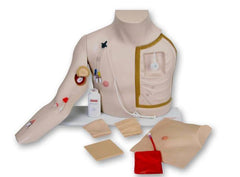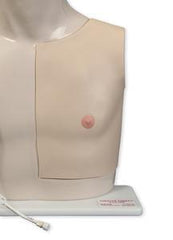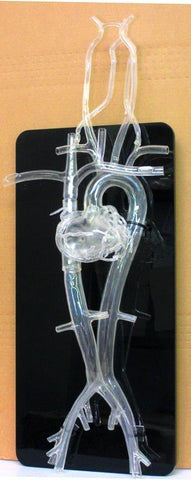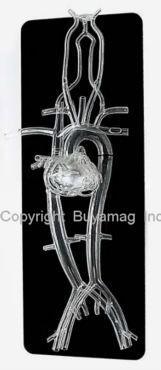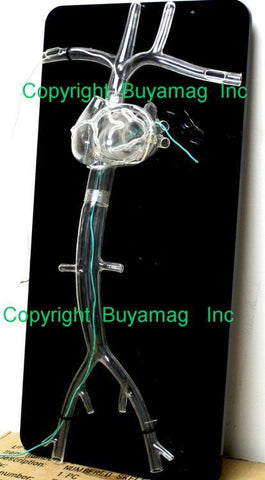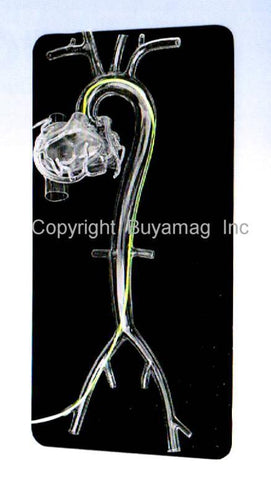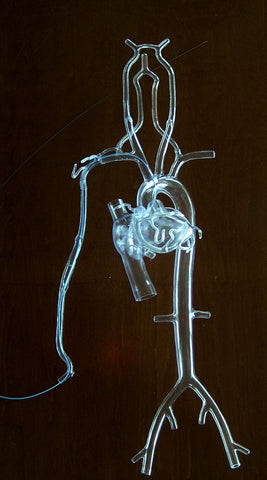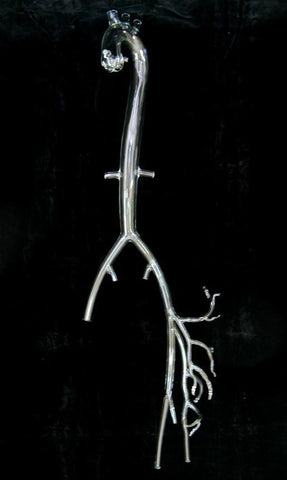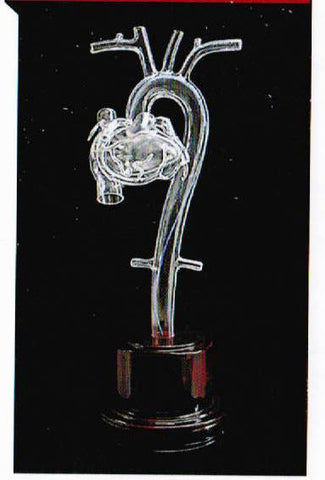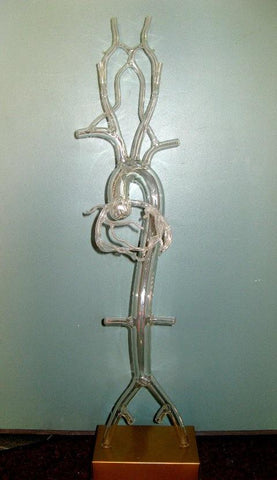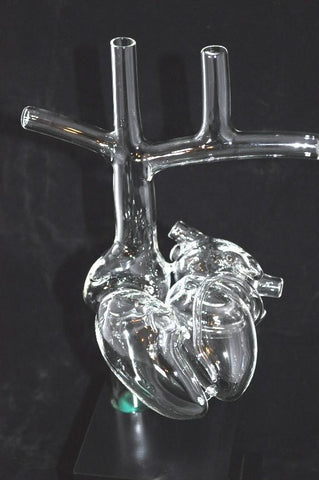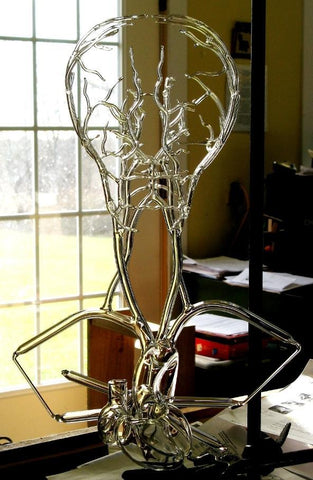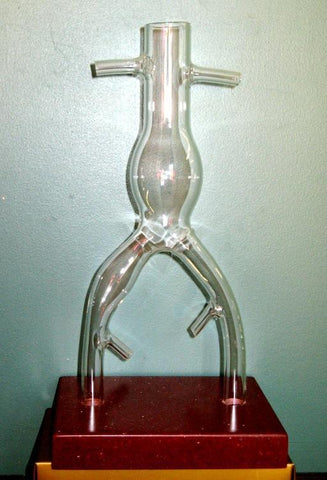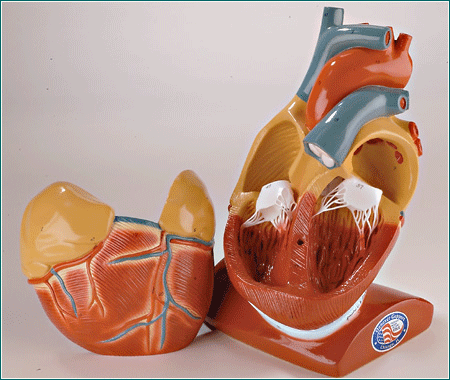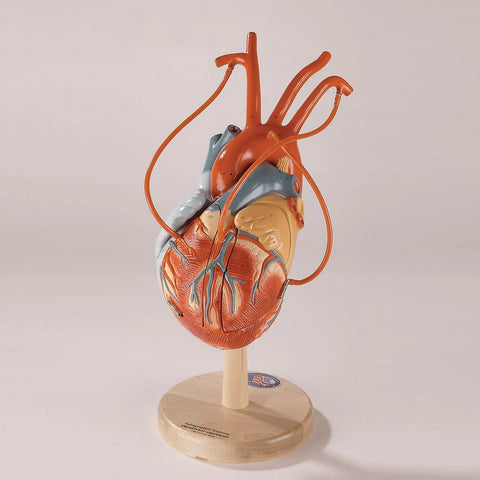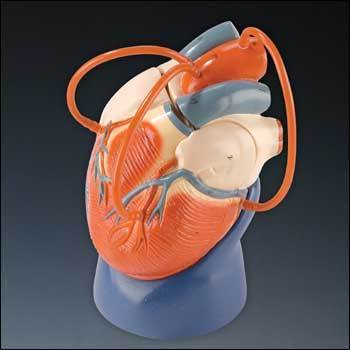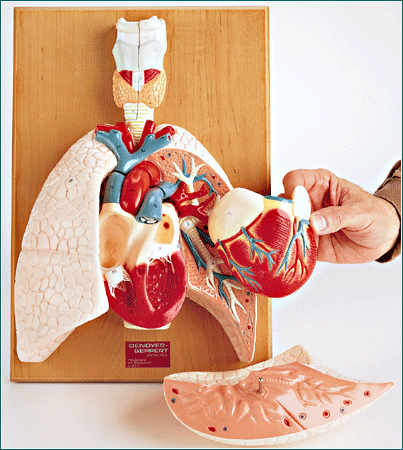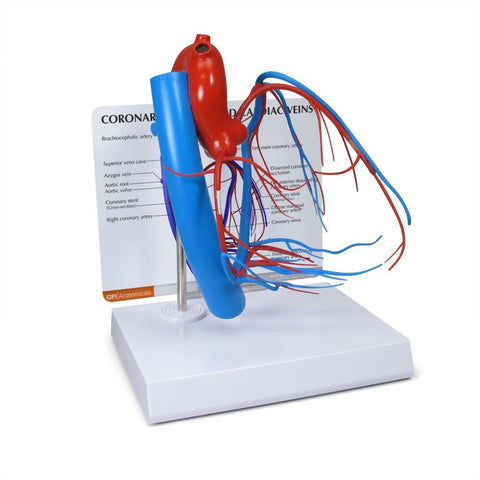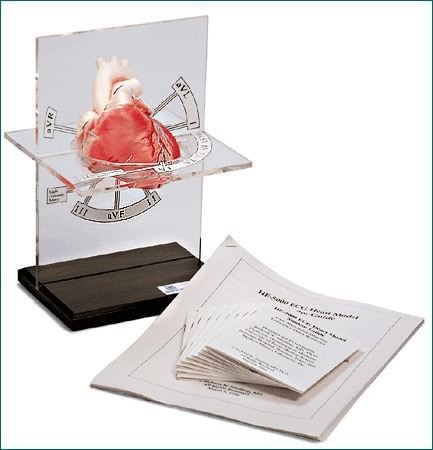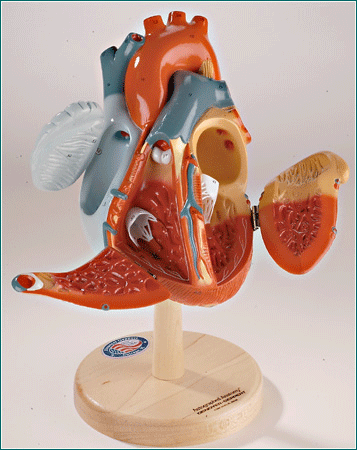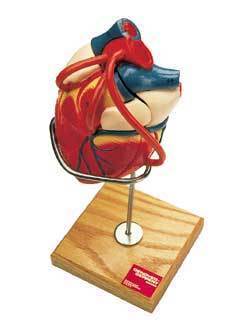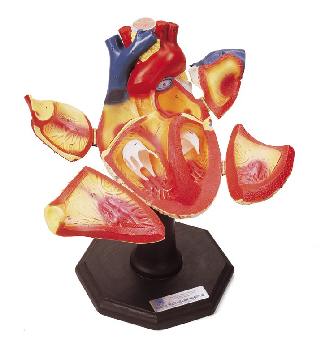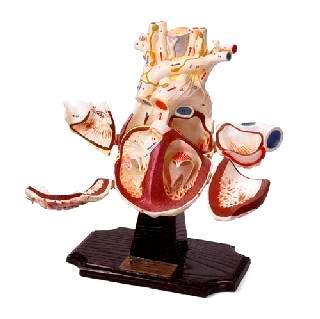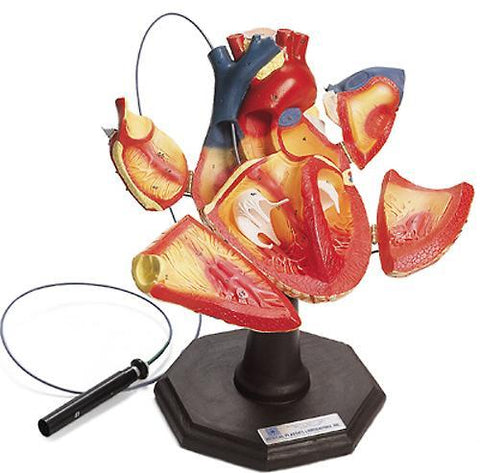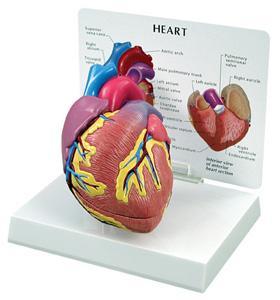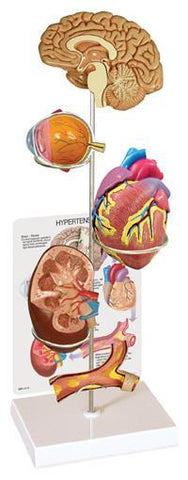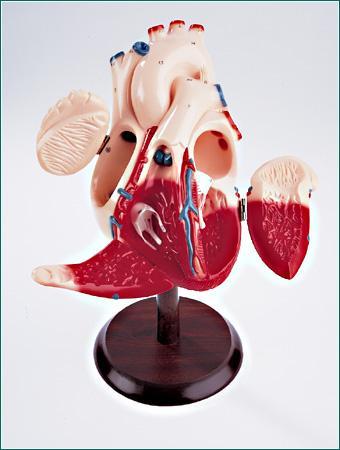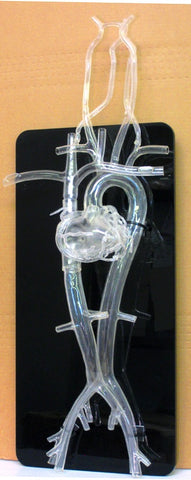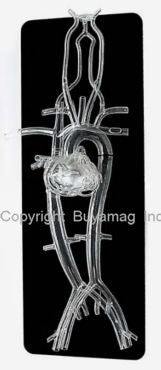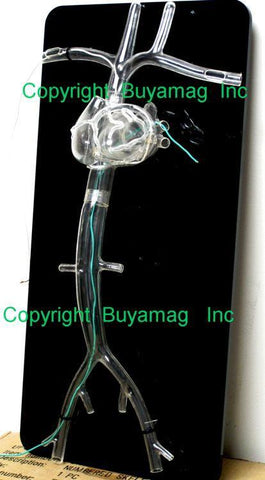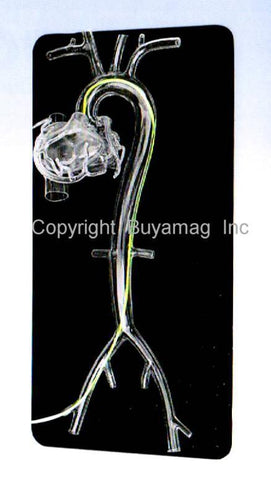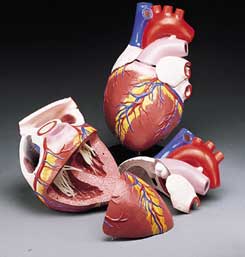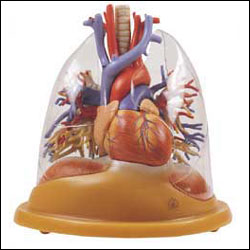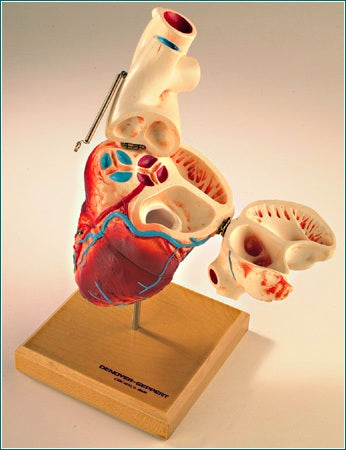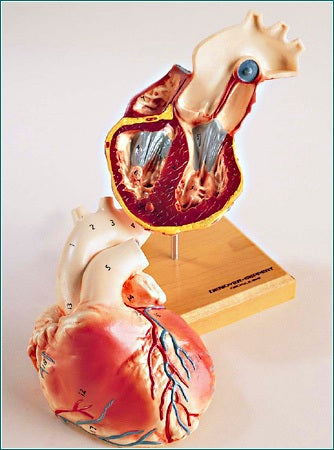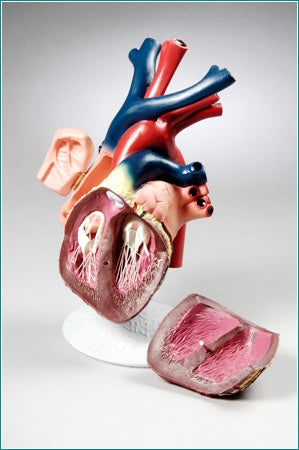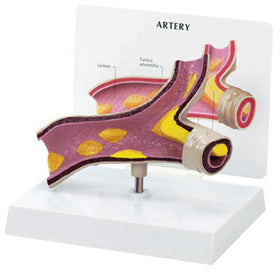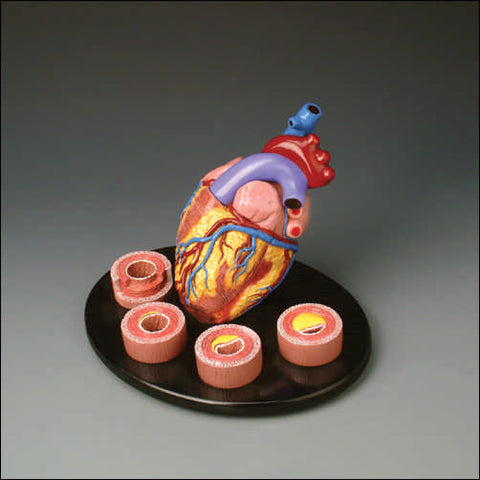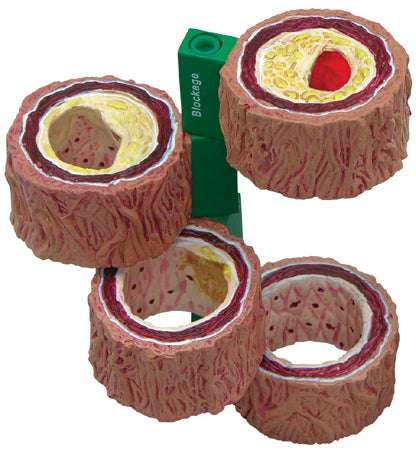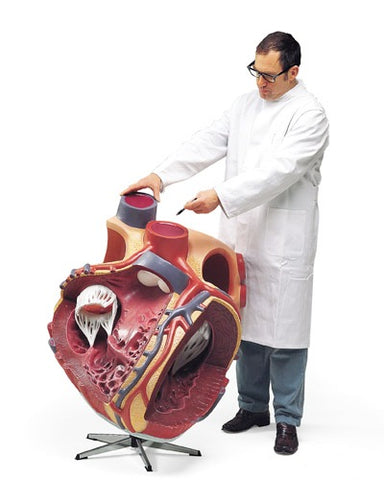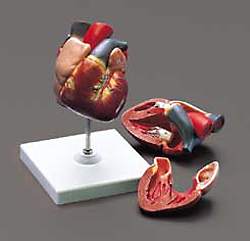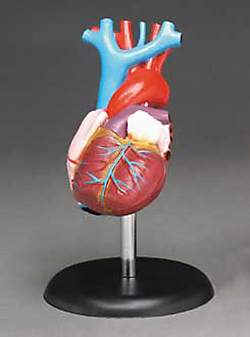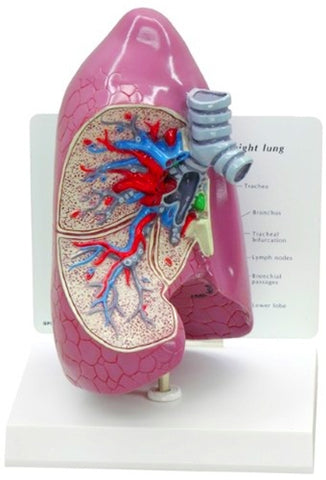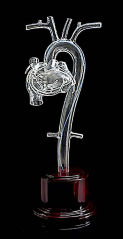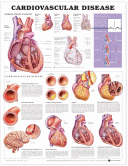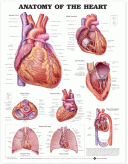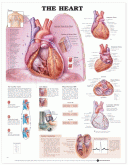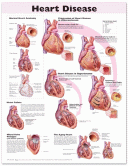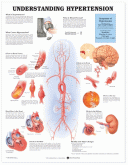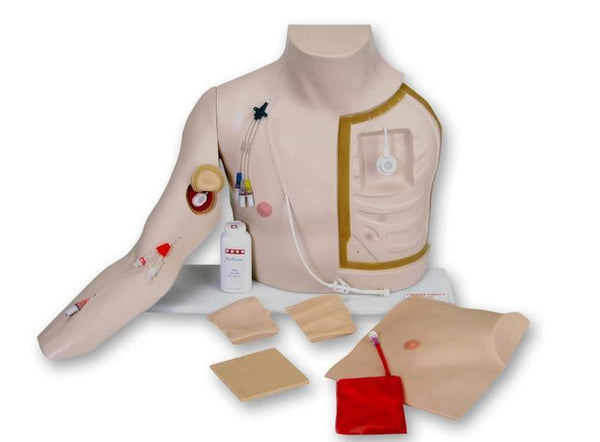
This is a unique, Catheterization simulator is Life - Size, compact, portable teaching-training simulator, enables medical students, nurses, health providers, pharmaceutical laboratories to develop total competence & experience with three of the most common types of long-term Vascular access Devices (VAD'S):
Implanted Vascular access devices
External Central Catheters
Peripherally Placed Central Catheters
Access routes allow opportunity to practice blood withdrawal, heparinization, and fluid infusion. This simulator can be used in either an upright or supine position This life-like training model is provided with a prepositioned surgically placed central catheter and peripherally placed central catheter.
The distal ends of each catheter are attached to "blood" reservoir bags. The external jugular vein is slightly raised with an opening for your catheter placement, permitting the practicing of dressing techniques. Routine accessing can be practiced aver the nonreceassed rib area. A blood reservoir bag, tubing and connector are in place for easy attachment of your implantable vascular access devise.
The artificial blood provides confirmation of proper needle location when "blood" is aspirated - just the real thing! Hepatarisation & fluid infusion can be practiced using the secondary reservoir bag. The device accessed area used for practicing dressing & securing techniques.
A rigid underlying surface with discernable, molded ribs. Provides interchangeability of Difficult Accessing Inserts.
Difficult Accessing Inserts #420, 430, 440- Three bases upon which the vascular access device is placed, which when accessed through the overlying tissue flap, simulates the feel of a wandering or shifting device, the feel of a titling or tipping device, or a deeply placed device.
Outer Tissue Flap #405, A specially formulated tissue equivalent material duplicating the weight, resilience, and feel of human tissue. The skin actually moves us you palpate and will remain its integrity even after numerous needle insertions into underlining devise.
Prepositioned, surgically placed central catheter.
The subcutaneous tunnel is visible up to and just over the clavicle
The Dacron Cuff is also discernable
The catheter's distal end is preattached to a "blood" reservoir bag enabling the clinician to demonstrate blood withdrawals, heparinization, and infusion techniques.
A peripherally placed central catheter is prepositioned in the detachable right arm. The arm is in a rotated and extended position, enabling easy access.
Both the cephalic and basilic veins are slightly raised for easy identification, with the long arm catheter exiting from the basilic vein.
The area around the catheter exit site can be used to practice site care and maintenance.
Life-size torso & detachable right arm
Outer Tissue Skin Flap (Feels Real-Like)
Three Difficult Accessing Inserts, simulating a deeply placed device
Surgically placed Central Catheter
Peripherally inserted catheter
Propositioned & Preattached to "blood "reservoir bag
Implanted Port
Tubing & Talcum Powder
Blood supply
Instruction/User guide Wt ---- 11Lbs

